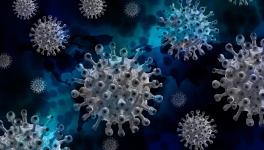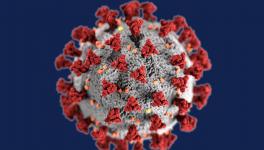Contracting COVID-19 From cat Reported for First Time
New evidence of getting COVID-19 from another animal species has recently been reported. This time it is a pet cat that has infected a person in Thailand.
Earlier, hamsters and minks were found to be infecting humans, and the new finding adds felines to the species that can transmit the SARS-CoV-2 virus to humans. The cat-to-human transmission was recently reported in the journal Emerging Infectious Diseases.
From the early pandemic, researchers have been searching animal to human transmission of the coronavirus. That cats can shed infectious viral particles was found in studies conducted during the early period of the pandemic. Reports also say that in many countries during the pandemic, cats were infected with the virus. But the viral spread from cats to humans and vice versa was not established till now. Experts consider the Thai study an example of good contact tracing, which has established an already apprehended phenomenon. Experts believe that the results are convincing. However, it is surprising that it took so long to establish it because the virus has the ability to jump from other species to humans and pet cats and humans stay close together.
Angela Bosco-Lauth, an infectious disease researcher at Colorado State University, said after the Thai finding came out that “ We’ve known this was a possibility for two years.”
The Thai finding has an exciting story behind; it came out accidentally, according to Sarunyou Chusri, a co-author of the study. Chusri is a physician and an infectious disease researcher at the Prince of Songkla University in Hat Yai, Thailand. A father and son duo who tested positive for COVID-19 and were kept in an isolation ward had a ten-year-old pet cat. The cat also tested positive in swabs. Interestingly, when the cat was swabbed, it sneezed on the face of a veterinary doctor. The vet doctor was wearing a mask but no eye protection. Later, he was also found as positive.
None of the vet doctor’s close contacts reported positive for COVID-19. Genetic analysis also revealed that the viral variant with which the vet doctor was infected was the same that infected the cat and its owner. The genomic sequences of the variants were found to be identical.
However, other experts say that such cat-to-human transmission of the coronavirus is rare. Previous studies, according to Leo Poon, a virologist at the University of Hong Kong, suggested that cats don’t shed viruses much; moreover, they do the shedding only for a few days.
The authors of the study, however, emphasise that there is no harm in taking extra caution while handling pet cats. They say that the pet animal is not to be abandoned, but the owners must be extra cautious.
Bosco Lauth believes that humans are still the major source of virus transmission, and animals can’t be considered significant contributors to the spread of the virus. Nevertheless, the new findings enhance our knowledge about the zoonotic (infections that spread from other animal species to humans) potential of the coronavirus.
Get the latest reports & analysis with people's perspective on Protests, movements & deep analytical videos, discussions of the current affairs in your Telegram app. Subscribe to NewsClick's Telegram channel & get Real-Time updates on stories, as they get published on our website.
























